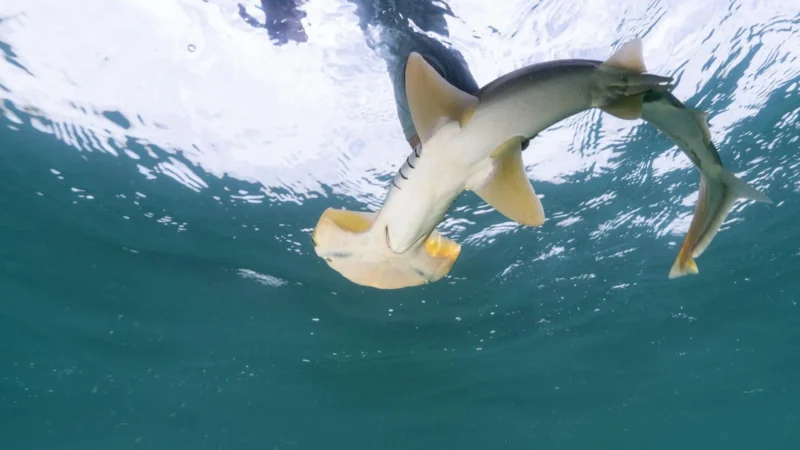Top Highlights
-
Revolutionary Detection Method: FIU scientist Diego Cardeñosa has developed a groundbreaking test using environmental DNA (eDNA) to detect elusive hammerhead sharks without needing to see them, aiding conservation efforts for endangered species.
-
Targeting Endangered Species: The technique focuses on critically endangered smaller hammerhead species whose populations have plummeted due to overfishing, enabling researchers to identify high-priority conservation areas from Mexico to Northern Peru.
-
Challenging Habitat Monitoring: Cardeñosa’s research highlights the difficulty of monitoring these sharks in their remote, shallow coastal habitats, which are often poorly regulated but may still offer refuge for these species.
-
Preserving Evolutionary History: The mission transcends conservation, as Cardeñosa emphasizes the importance of protecting these sharks to preserve a crucial piece of evolutionary history and the broader marine ecosystem.
Innovative Techniques to Locate Hammerhead Sharks
A groundbreaking method developed at Florida International University can detect hard-to-find hammerhead sharks. Scientists can now identify genetic traces in seawater without ever seeing these elusive creatures. This technique serves as a biological footprint, giving researchers critical insights into where these sharks have been. As smaller hammerhead species teeter on the brink of extinction, this innovation offers a beacon of hope for conservationists. By pinpointing areas rich in these species, the study equips stakeholders to allocate resources more effectively.
For instance, researchers can focus on Colombia’s Uramba/Bahía Málaga National Natural Park, a potential refuge for the sharks. In areas where fishing regulations often fail, knowing where these sharks are can make all the difference. The short-term goal is to locate critically endangered species, such as the scalloped bonnethead, whose presence has been nearly extinct in documented sightings for decades. By tracking their locations, scientists can formulate targeted conservation methods.
A New Era for Marine Conservation
This method does more than just help locate sharks; it raises awareness about their role in our oceans. After all, these species represent a significant piece of our planet’s evolutionary history. Losing them would mean erasing a part of that history forever. Therefore, understanding where they still exist becomes imperative.
Furthermore, Cardeñosa’s work inspires broader initiatives. Environmental DNA can shed light on various marine species, highlighting biodiversity and ecosystems that may need attention. The implications extend beyond hammerheads, meaning future generations may explore forgotten marine life through preserved DNA samples. The ocean’s mysteries remain, but this innovative research lays a foundation for enhanced protection of our marine ecosystems.
In essence, this new tool could transform marine conservation, allowing for data-driven strategies to combat extinction, ultimately striving to coexist harmoniously with marine life. As we gain deeper insights into the underwater world, we actively participate in safeguarding it for future generations.
Expand Your Tech Knowledge
Learn how the Internet of Things (IoT) is transforming everyday life.
Access comprehensive resources on technology by visiting Wikipedia.
TechV1

